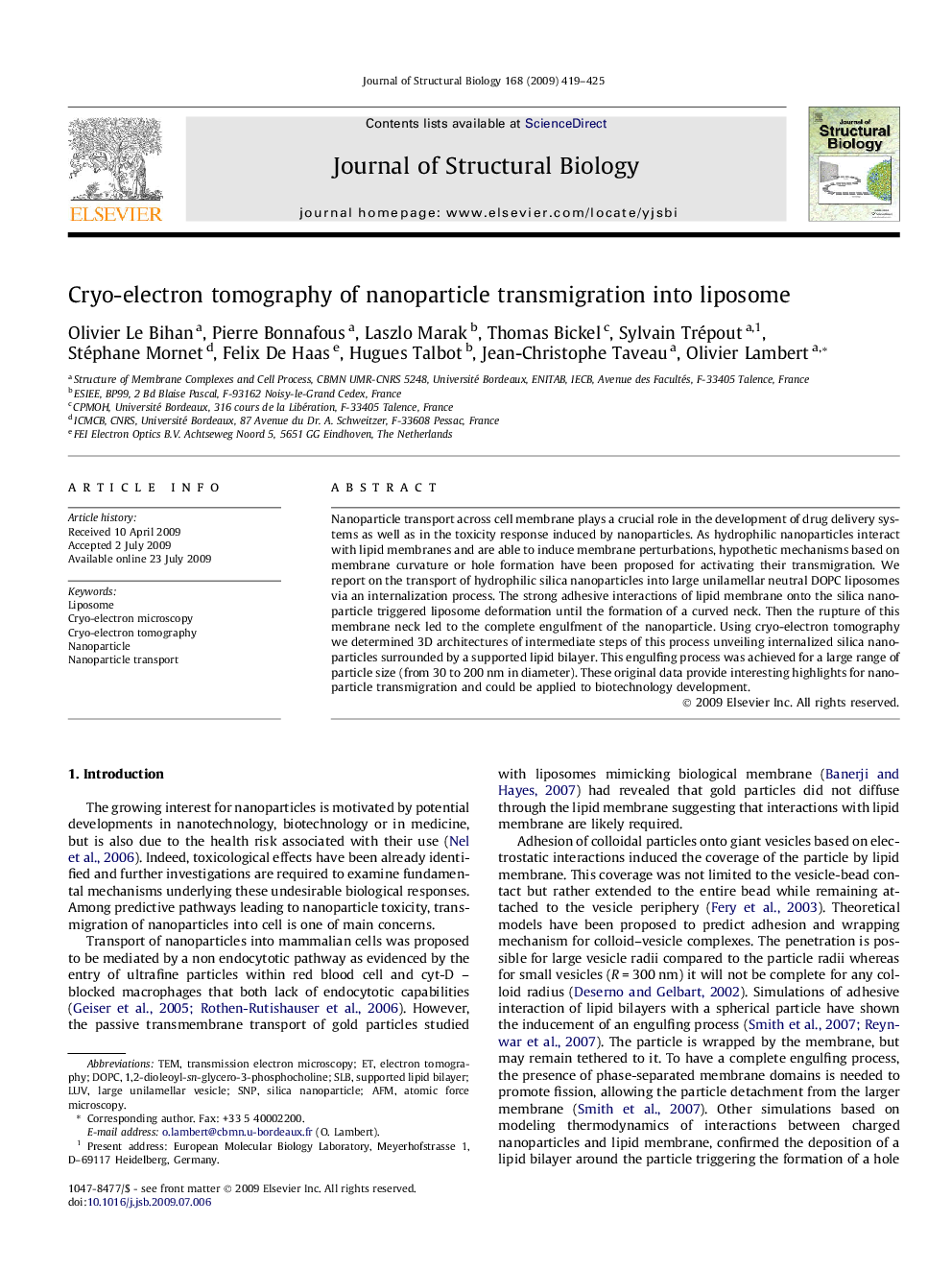| Article ID | Journal | Published Year | Pages | File Type |
|---|---|---|---|---|
| 2828953 | Journal of Structural Biology | 2009 | 7 Pages |
Nanoparticle transport across cell membrane plays a crucial role in the development of drug delivery systems as well as in the toxicity response induced by nanoparticles. As hydrophilic nanoparticles interact with lipid membranes and are able to induce membrane perturbations, hypothetic mechanisms based on membrane curvature or hole formation have been proposed for activating their transmigration. We report on the transport of hydrophilic silica nanoparticles into large unilamellar neutral DOPC liposomes via an internalization process. The strong adhesive interactions of lipid membrane onto the silica nanoparticle triggered liposome deformation until the formation of a curved neck. Then the rupture of this membrane neck led to the complete engulfment of the nanoparticle. Using cryo-electron tomography we determined 3D architectures of intermediate steps of this process unveiling internalized silica nanoparticles surrounded by a supported lipid bilayer. This engulfing process was achieved for a large range of particle size (from 30 to 200 nm in diameter). These original data provide interesting highlights for nanoparticle transmigration and could be applied to biotechnology development.
